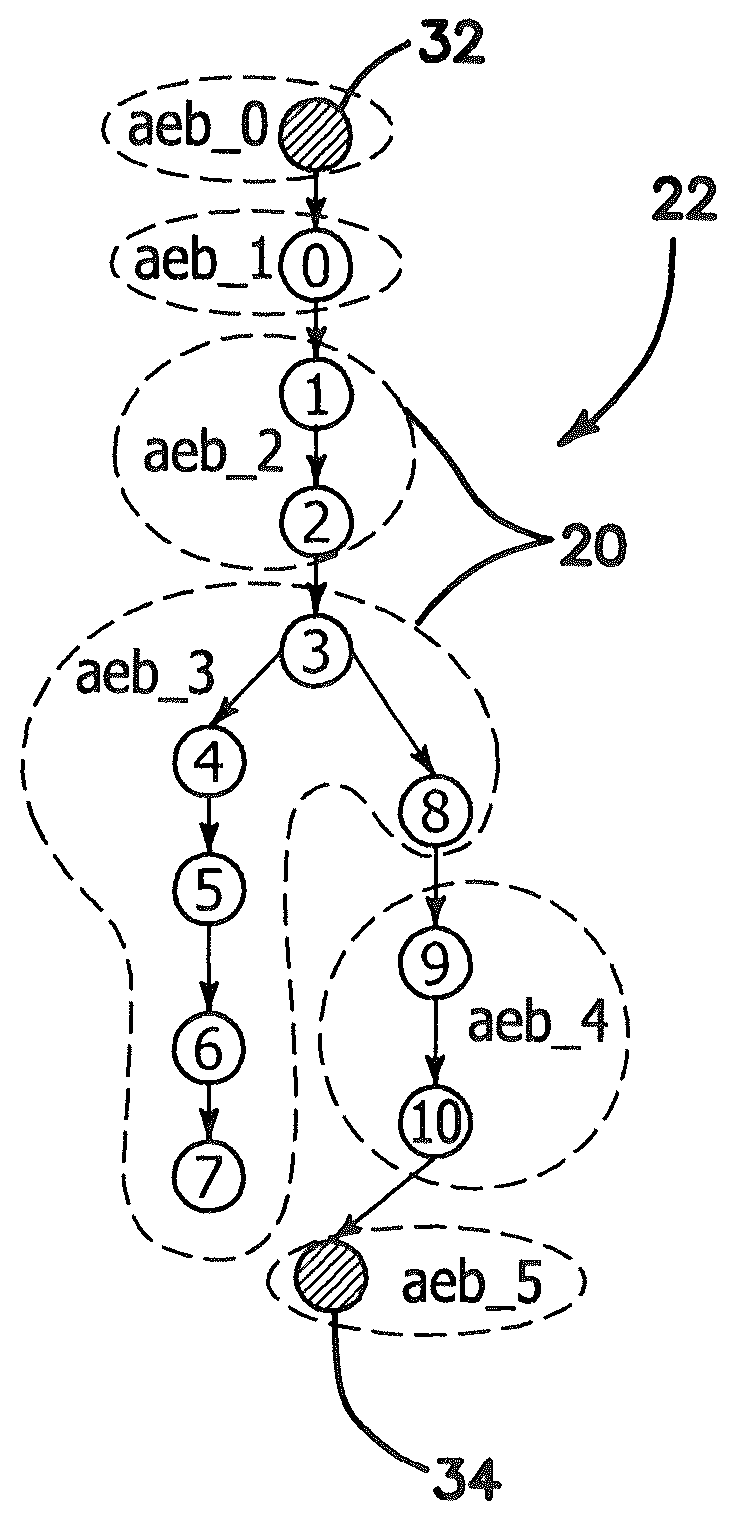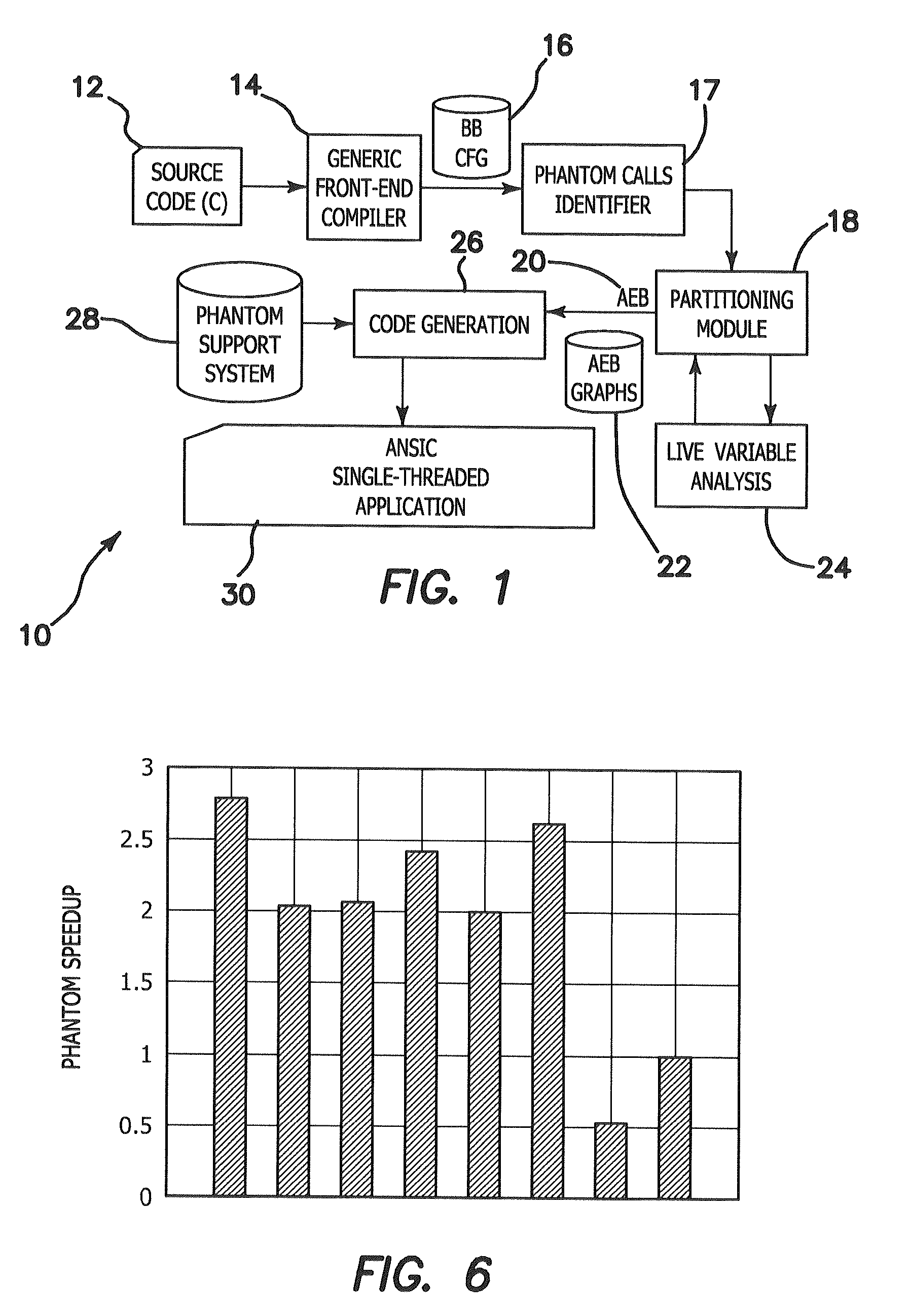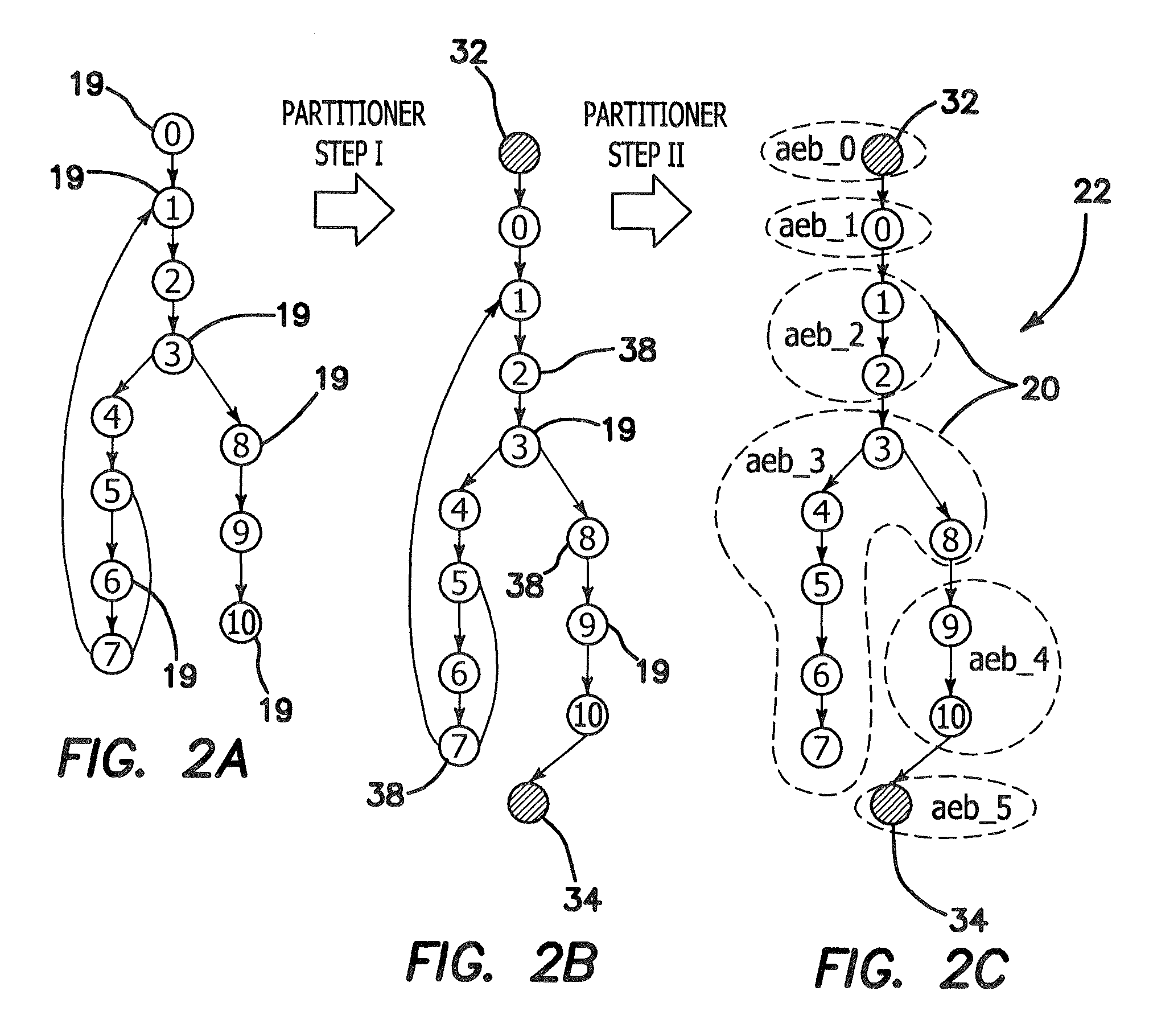Phantom serializing compiler and method of operation of same
a compiler and serialization technology, applied in the field of multitasking applications, can solve the problems of embedded software or software dedicated to a special purpose development, the development of embedded software poses a major design challenge, and the support is seldom available for each and every variant of the base embedded processor, so as to enable the fine grain control of task timing and enhance the overall performance
- Summary
- Abstract
- Description
- Claims
- Application Information
AI Technical Summary
Benefits of technology
Problems solved by technology
Method used
Image
Examples
Embodiment Construction
[0053]The illustrated embodiment of the invention is used during the development of embedded systems software. The designer specifies a multitasking code for the application, and the tool translates the code into a single-threaded code that can be executed in any processor without the need of any external libraries or extra system support. It can replace the use of a generic Operating System layer providing support for multitasking execution. An API is used by the programmer to specify task creation, synchronization, and communication. The API partially supports the POSIX interface. In the illustrated embodiment, the input is ANSI C compliant, extended only with POSIX. The output is an ANSI C, single threaded code, with no POSIX calls. The output is functionally equivalent to the input. The output can be compiled with any C compiler to generate code for any embedded processor or platform.
[0054]POSIX is an acronym for “portable operating system interface for UNIX”, a set of IEEE and ...
PUM
 Login to View More
Login to View More Abstract
Description
Claims
Application Information
 Login to View More
Login to View More - R&D
- Intellectual Property
- Life Sciences
- Materials
- Tech Scout
- Unparalleled Data Quality
- Higher Quality Content
- 60% Fewer Hallucinations
Browse by: Latest US Patents, China's latest patents, Technical Efficacy Thesaurus, Application Domain, Technology Topic, Popular Technical Reports.
© 2025 PatSnap. All rights reserved.Legal|Privacy policy|Modern Slavery Act Transparency Statement|Sitemap|About US| Contact US: help@patsnap.com



